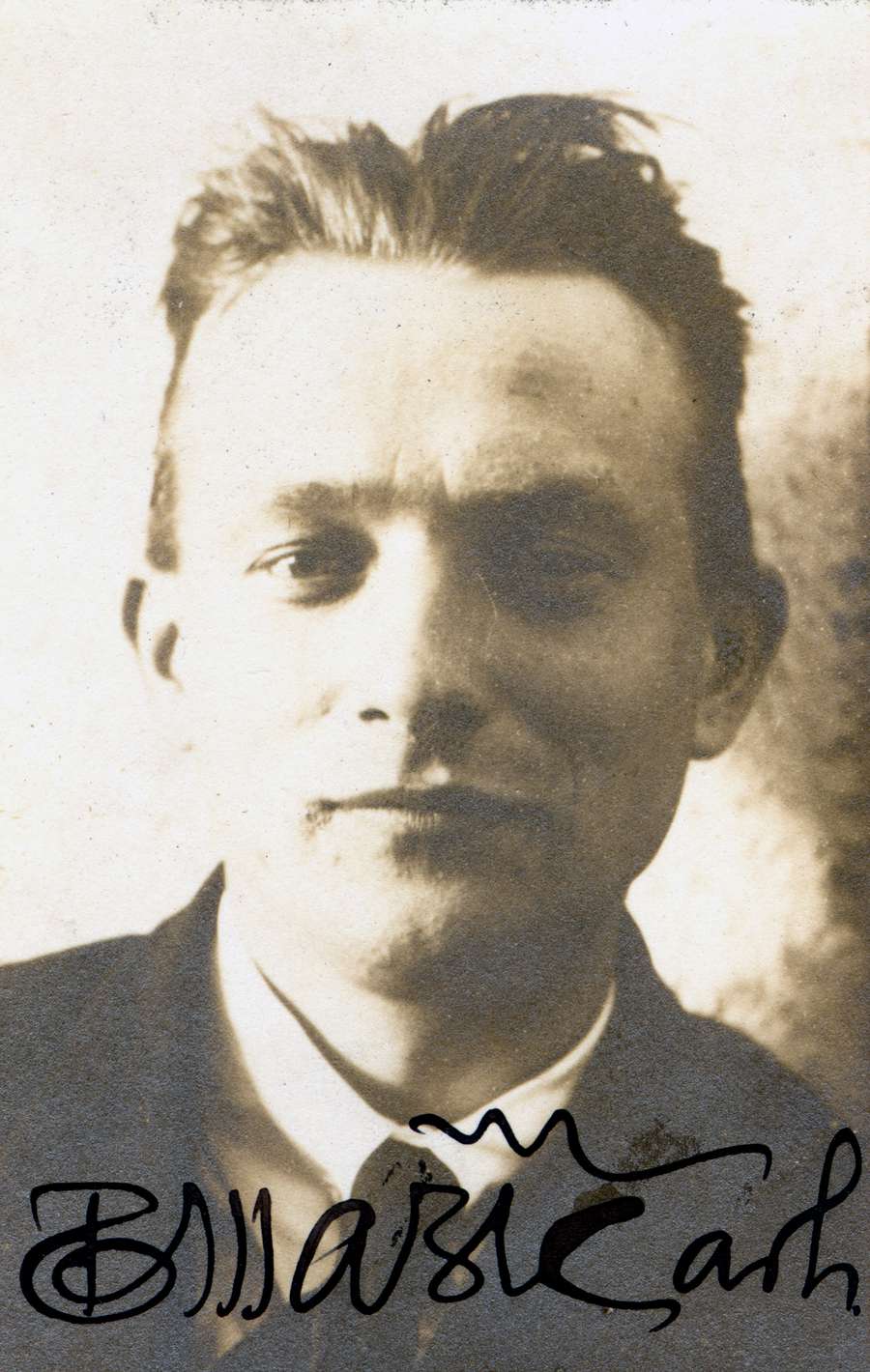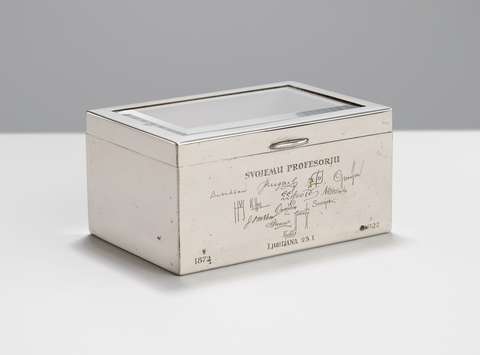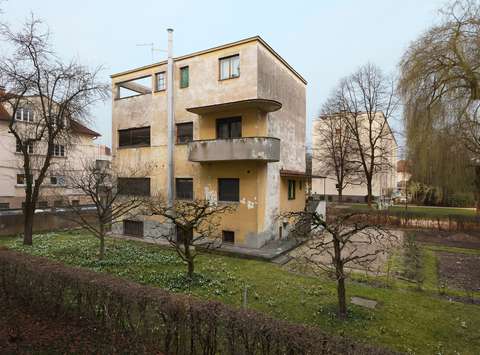France Tomažič
First Graduate of Plečnik’s School
Tomažič graduated in 1924 and remained with Plečnik as an assistant until 1930, when he became independent. In 1932 he passed the Professional Competence Examination and became a certified architectural engineer, upon which he opened his own studio in Ljubljana. At first, Tomažič followed Plečnik's architectural view very closely, but with his first independent works he demonstrated a complete reversal and understanding of modern planning problems.
Modernism’s Functionalist architecture in the area of today’s Slovenia culminated in the period between the world wars and followed contemporary architectural trends in Europe, but it also had its own unique identity. In this period, the Faculty of Technical Sciences was established in Ljubljana and with it the Department of Architecture where professors Ivan Vurnik and Jože Plečnik worked. Among the first generation of architectural students in Plečnik's School at the newly-founded faculty was France Tomažič (4 November 1899 – 18 September 1968). Soon after his graduation, Tomažič became the professor's assistant but eventually left the world of academia in the 1930s to find his own architectural expression. He was one of the most active architects in the area of today's Slovenia during the interwar period.
Tomažič's architecture is a complex conglomerate of various influences. The common thread, appearing all throughout his oeuvre is the following of contemporary shifts in architecture, while each of his works also contains specifics in its artistic expression. After the 1920s, when Tomažič collaborated as Plečnik’s assistant on projects that are Plečnik’s in thought: Church of St. Magdalene in Maribor (1923), Church of the Ascension in Bogojina (1923–1927), Mutual Insurance Building (1928–1930) and the Chamber of Commerce, Craft and Industry (TOI) (1925–1927), we can see a shift in his architectural expression in the 1930s that corresponds with his growing independence. The terraced houses on Dermot Street (1931) stand as his first independent project after leaving Plečnik’s School, and they represent a transition of style from his former mentor’s to the imperatives of functionalism. Echoes of Plečnik’s style can still be seen in the design of architectural elements while Tomažič’s floorplan already followed functionalist concepts.
In later works, such as the villas of the families Grivec (1934) and Oblak (1931–1937), he made a further step towards Modernism – in a stylistic, spatial and structural sense. Both villas have skeleton frames and new construction materials were also used. Their spatial orientation lies towards the garden and the sun, their façades are smooth and silhouettes orthogonal (with the exception of the great arch at Villa Oblak), with great emphasis on connecting the inside of the house with the outside world – with a terrace, a balcony, a garden. With the villas Oblak, Grivec and Kopač (1936), Tomažič catered to his clients, the educated bourgeoisie class that wanted to live in modern houses.
Functionalism is also prevalent in the skeleton frame of the commercial-residential house of the Mutual Insurance (1936), the Institute of Mining Engineering (1937), the Institute of Civil Engineering in Bežigrad (1951) and the apartment building in Koper (1957). Within all of these projects we can observe elements that were specific to Tomažič and not to be found with any of his contemporaries. The frames became “emphasised” and observable on the buildings’ façades in the form of verticals and horizontals that delineate the window surfaces. Despite our labelling Tomažič as a “functionalist”, he preserved connections with Plečnik’s tradition in several ornamental solutions.
Tomažič’s ideas and plans followed the world’s “zeitgeist”. He could have chosen a (perhaps) easier path and remained at Plečnik’s side for the rest of his life, but he renounced that notion. He introduced architectural novelties from Western Europe but adapted them to his own ideas. Regarding himself and other architects of his generation, he wrote the following: “A young architect left behind the mists of Parnassus [Plečnik’s School] and stepped into a thriving life. There is no doubt that the ideals that shape men today will be decisive in his path to arrange living in this new era. He is not closed in his studio and doesn’t dream on paper about golden castles and good old times. He knows well that the times of the Medici, Renaissance kings and dukes are long behind us, never to return, together with patrons […]. The young architect seeks in his work the expression of honest work, clarity of design, simplicity of shapes, and men’s health and joy of life.”
Despite the fact that Tomažič’s works within Slovenian modernist architecture left undeniable traces, especially in the 1930s when he planned some of the first functionalist villas in today’s Slovenia, his full oeuvre never received more detailed research. Consequently, the importance of his works is often overlooked within art historical and architectural circles.
Colophon
Museum and Galleries of Ljubljana, Plečnik House
Represented by: Blaž Peršin, Director
Author of the exhibition: Ines Žganec
Curator of the exhibition: Ana Porok
Production of the exhibition: Ana Modic
Photographs: Historical black and white photographs: documentation, Plečnik Collection, Museum of Architecture and Design, University of Ljubljana, dr. Bogo Zupančič
Contemporary colour photographs: Miran Kambič, Andrej Peunik
Graphic and exhibition design: Bojan Lazarevič, Agora Proars
Language editing: Katja Paladin, Derek Marsh Snyder s.p.
English translation: Matic Šavli
Promotion: Urša Karer, Nejc Kovačič, Ana Modic
Exhibition layout: O.K.vir d. o. o., Technical services of MGML
Location
Karunova 4–6
1000 Ljubljana
T +386 1 280 16 04 (reception)
T +386 1 241 25 06
E plecnik@mgml.si
Opening hours
Tuesday–Sunday: 10:00–18:00
Monday: Closed
1 January, 1 November, 25 December: Closed
24 and 31 December: 10:00–14:00
Tickets
Visits of the original Plečnik’s home are only possible with a guided tour that begins every full hour. In case the visitors on the guided tours come from different countries, each tour is conducted in two languages – Slovenian and English.
RECOMMENDED: you can buy your tickets online and book your date here.
For more information, please contact plecnik@mgml.si or +386 1 280 16 04.
Visiting the Plečnik House (price includes permanent exhibition Plečnik and a guided tour of Plečnik's home)
Adults: 9 €
Students: 7 €
Children: 7 €
Children up to the age of 6: Admission free
Adults over the age of 60: 7 €
Families: 18 €
Unemployed visitors: 7 €
Visitors with disabilities: 7 €
Free admission for carers
ICOM, PRESS, SMD: free admission
Guided tours for private groups of more than 7 visitors need to be booked at least 5 working days in advance.
Visiting the Plečnik House with a prior reservation
Groups of up to 5 persons: 50 €, 40 € at reduced price
Groups of over 5 persons: 10 €/person, reduced 8 €/person
Visiting the permanent exhibition Plečnik
Adults: 6 €
Students: 4 €
Children: 4 €
Children up to the age of 6: Admission free
Adults over the age of 60: 4 €
Families: 12 €
Unemployed visitors: 4 €
Visitors with disabilities: 4 €
Free admission for carers
ICOM, PRESS, SMD: free admission




